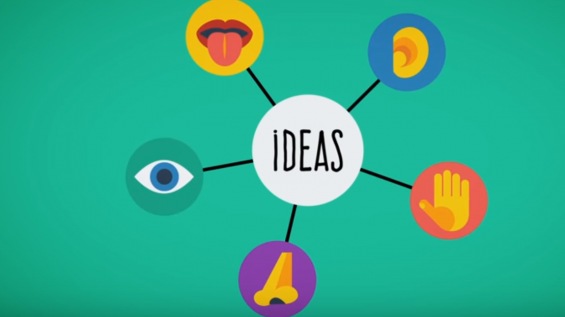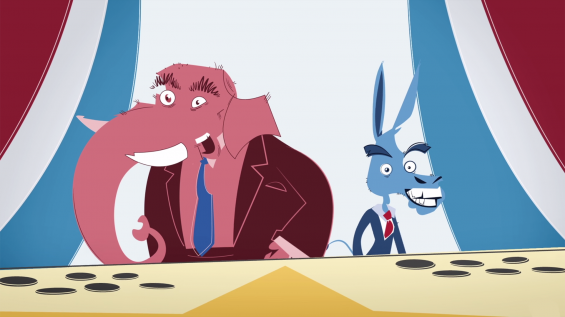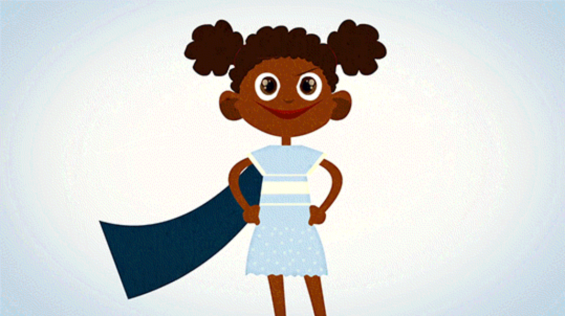
Best TED-Ed Lessons of 2014 (staff edition)

As we wrap up 2014, we asked each member of the TED-Ed staff to share his or her favorite TED-Ed Lesson from the past year. Choosing just one was no easy feat; we posted a total of 135 incredible animations this year on some pretty fascinating topics ranging from honeybees to hippocampi (and a lot of places in between).
Here are the top 2014 TED-Ed Lesson picks from TED-Ed staff, along with a range of silly, thoughtful, and personal reasons why these lessons made the top of our list. And don’t forget to tell us: What was your favorite TED-Ed Lesson of 2014?
How to speak monkey: The language of cotton-top tamarins
Chosen by Logan Smalley, Director, TED-Ed
TED-Ed published so many memorable animations in 2014, but the one that stands out in my mind is Anne Savage’s lesson on cotton-top tamarins. Why? Because if you watch it, and if you check the credit roll at the end of the video, you will see that a significant portion of the lesson was actually narrated by a monkey. Cotton-top tamarins are a charming and critically endangered species of monkey that reside exclusively in the jungles of Colombia. I’m very proud that Anne, Avi Ofer, the TED-Ed team and an actual monkey were able to teach people about these rare and adorable creatures.
A different way to visualize rhythm – John Varney
Chosen by Lisa LaBracio, TED-Ed Animator
I am drawn to this lesson for so many reasons – but more than anything I think the design is genius! I love that the educator proposed a new visual language for understanding rhythm and that the TED-Ed animation team brought it to life so well. As an animator, I have always been most impressed when moving images allow you to hear an audio track better, or in a new way. I could watch this lesson over and over and continue to feel as though I am taking a journey around the world of both music and design.
Dead stuff: The secret ingredient in our food chain - John C. Moore
Chosen by Tristine Baccam, TED-Ed Special Projects Coordinator
I love this lesson for so many reasons, but I was mainly amazed at how creative the animators were in using actual leaves! It’s a truly gorgeous piece that not only highlights the artwork but also reiterates to the viewer our interconnectedness with the rest of the world. It’s not everyday that you get reminded that we are all consuming detritus and waste!
The coelacanth: A living fossil of a fish – Erin Eastwood
Chosen by Jessica Ruby, TED-Ed Production Coordinator
Ignore everything you’ve ever learned on the matter — zombies are REAL. The story here is fascinating and little known. And this animation is laugh out loud funny while entirely aiding the lesson’s narrative and objective. This lesson perfectly encapsulates a TED-Ed Lesson to me: an interesting story you may not learn in school otherwise coupled with fantastic animation that makes you excited about learning more. And did I mention how hard I laugh every time I watch it? All my thumbs up!
The science of spiciness – Rose Eveleth
Chosen by Sara Kladky, TED-Ed Web Coordinator
This lesson was my favorite because I love spicy food, and I thought the video was cute and fun! I’d never realized that spiciness wasn’t really a flavor, and since horseradish is my favorite, it was cool to learn the difference between isothiocyanates and alkylamides.
How do you know you exist? – James Zucker
Chosen by Jeremiah Dickey, TED-Ed Animation Producer
This lesson is a great introduction to Descartes’ famous philosophical answer to the most basic existential question. It’s also one of the most hilarious mind-fudges of a lesson we’ve ever published, as might be expected of anything that comes from the desk of legendary New York animator John R. Dilworth. With impeccable comic timing, the animation is a perfect cartoon send-up of the absurdity and confounding limitations that arise when one finds oneself at the crossroads of subjective perception and objective reason. At least that’s what I think… therefore… uh… well, just watch it.
Population pyramids: Powerful predictors of the future
Chosen by Stephanie Lo, TED-Ed Director of Programs
Before watching this lesson, I had never heard of a population pyramid. The combination of strong writing and clear, focused animation in this piece really helped drive the topic home and put the world in perspective. I’m also excited about its applications for teachers. I can totally see this being used in social studies classrooms around the world.
From the top of the food chain down: Rewilding our world – George Monbiot
Chosen by Gerta Xhelo, TED-Ed Producer
I love this lesson on trophic cascades (ecological processes that tumble from the top of an ecosystem to the bottom). It’s a beautifully animated short that reminds us that everything in our planet is connected and that there needs to be a balance for ecosystems to thrive. I ADORE animals (I often prefer them to humans), and this lesson explains why they are necessary to our planet’s survival.
The Case of the Missing Fractals – Alex Rosenthal and George Zaidan
Chosen by Caroline Cristal, TED-Ed Programs Coordinator
The animation for this lesson is beautiful, and the story is very compelling. The narrative incorporated information about fractals so seamlessly that I learned all about them (which, I’ll admit, I knew nothing about) without truly realizing it.
The Case of the Vanishing Honeybees – Emma Bryce
Chosen by Alex Rosenthal, TED-Ed Editorial Producer
This lesson haunts my dreams. It’s a brilliantly animated CSI whodunnit that leaves out a third and final act where all the pieces fall into place and we catch our culprit (because we don’t yet know the answer). And so I feel compelled to go forth and solve the mystery myself. The visuals seal the deal; the minimal color palette, deft transitions, and brief bee POV shot all make me want to spend much more time in the world of this lesson.
The fundamentals of space-time - Andrew Pontzen and Tom Whyntie
Chosen by Franz Palomares, TED-Ed Animation Producer
The three part space-time series is my favorite group of lessons from the last year. It’s a subject that I’ve always been interested in, and I think these lessons present the difficult material clearly and in a fun way. The characters are beautifully designed and animated with such ease. I can watch them over and over again without getting tired.
Why elephants never forget – Alex Gendler
Chosen by Emilie Soffe, TED-Ed Editorial Coordinator
I’m only half embarrassed to admit that this lesson makes me cry every time I watch it. In addition to the happy tears provoked by Avi Ofer’s adorable animations of elephants at play, this lesson also packs a heavier punch with its devastating reminder that these brilliant animals continue to suffer at the hands of humans. This lesson is one of many posted this year that reminded me of the magic and wonder inherent in the animal kingdom.




Sir Ken Robinson – definitely! Still the best! (y)
“Why elephants never forget” by Alex Gendler is great and eye-opening! Love the animation, very well done.
Great Animation!